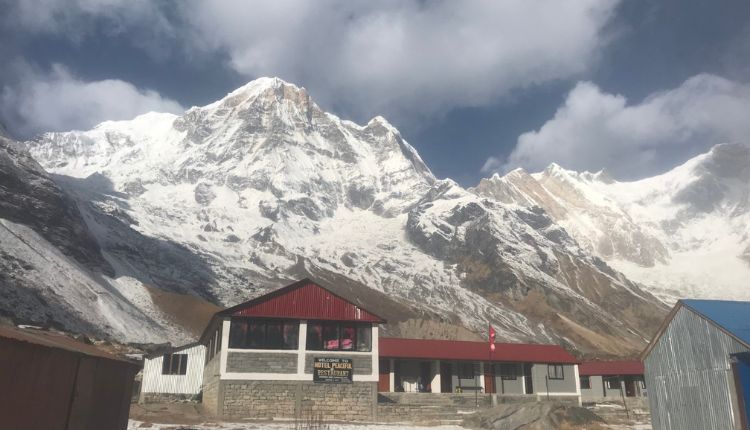
10 Tips for Enjoyable and Fulfilling Annapurna Base Camp Trek in Nepal
Annapurna Base Camp (ABC) trek is the trekker’s top choice to go on for unforgettable adventures.
It is perfect evidence of the Himalayan attraction and natural beauty. You can explore the spectacular views of the tallest peak, verdant landscapes, and cultural diversity.
Trekking in the Annapurna Base Camp has now become the trekker’s go-to destination for exploring the splendor of the Himalayas.
It includes several mountain ranges, including the Gangapurna, Machapuchare (Fishtail), and Annapurna South, in addition to other smaller peaks.
Moreover, the route passes through rivers, beautiful villages, terrace farmland, and lush forests. These things make the Annapurna Base Camp Trek the best trekking destination in the world.
The trek spans around seven to ten days, which takes you to the majestic place on the earth. There is no age limit to conquer this trekking, as it requires a moderate level of fitness.
There are many valuable tips to enhance your journeys’ comfort and enjoyment. Here are 10 tips to ensure the enjoyable and fulfilling Annapurna Base Camp trek in Nepal:
Prepare Physically and Mentally
Annapurna Base Camp is located in an isolated area of Nepal. The route to the base camp is rough; many ascend and descend throughout the journey. Therefore, both mental and physical preparation are needed for this journey.
It is essential to get physically fit for the trekkers before embarking on this trek. Get engaged in regular cardiovascular exercise, hiking practice, and strength training.
Engage in daily workout routines such as jogging, running, strength training, and cardio, all of which can be done from home. This helps you to gain stamina and boost your energy.
Make sure you are mentally prepared for the challenge of trekking in a remote place. Similarly, don’t expect luxurious services on the trekking trail as the trail offers basic facilities of accommodation and food.
Acclimatize Properly and Altitude Sickness Awareness
Acclimatization helps your body to adjust to the high-altitude environment. To avoid altitude sickness, include an acclimatization day for your trek. Walk slowly, take a break, and don’t forget to hydrate your body by drinking lots of water.
Moreover, familiarize yourself with the symptoms of altitude sickness. Be prepared to act if you or a member of your group experiences altitude sickness. If the situation worsens then immediate evacuation or descend to the lower place as soon as possible.
This makes your travel more enjoyable and helps you have a better overall experience.
Pack Lightly
Pack lightweight and necessary stuff in your bag pack. Always consider the weather and season while packing your bag. This allows the trekker’s bag to weigh less.
Remember that whatever you carry should make you feel more comfortable. The items you pack can have a big impact on your level of comfort, safety, and overall trekking experience.
Carry warm clothes, comfortable hiking shoes, a good pair of trousers, a trekking bag pack, a sleeping bag, and any other necessary personal items.
Prioritize Hydration
It is essential to keep your body hydrated throughout the journey. Drink at least 3 to 4 liters of water every day. Always have a reusable water bottle with you and fill it up whenever you stop at a teahouse. You can drink the water by using a water filter or water purification tablet.
It’s important to be well hydrated during trekking, especially in high altitude conditions. Thus, to minimize the effects of altitude and avoid dehydration, drink lots of water.
Weather Awareness
The weather in the Himalayas is unpredictable and uncertain as it changes rapidly in a day. Although the daytime brings warmth and sunlight, the night gets cold. It is better if you look out for the weather forecast before embarking on this trek.
Trekking in the Annapurna region needs favorable weather and temperature for an exciting experience. Choosing the best time for trekking is necessary to get a clear visual of the mountains. The most popular trekking seasons are spring and autumn.
During these periods, the average temperature is about 10-15 degrees Celsius in the lower parts while the temperatures are lower at higher elevations.
Consider your tastes and the local weather while selecting the Annapurna Base Camp Trekking season.
Choose the Best Season
Trekking is most enjoyable in the spring when the weather changes from winter to spring. In this period, it offers bright daylight and a clear atmosphere.
Autumn is one of the best seasons for the Annapurna Base Camp Trek because of its beautiful sky, pleasant daytime temperatures, and cool evenings.
However, avoid trekking in early March since the pass has accumulated snow. It’s ideal to travel from mid-March until May.
Overall, every season in Nepal is possible for the trek; all you need is the right planning and equipment for a successful and comfortable journey.
Require Permits
Since the ABC trip is located within the Annapurna conservation region, trekkers must get a permission card to begin the journey.
Two permits are needed for the trekking to the Annapurna base camp: the Annapurna Conservation Area Permit (ACAP) and the Trekking Information Management System (TIMS).
This guarantees that you are walking legally and aids in the tracking of hikers by authorities for their protection.
Explore the Local Culture
Respect the traditions, customs, and way of life of this region. Before shooting any photos, get the locals’ permission. Gain a deeper appreciation and understanding of the culture of the area to make your trekking trip even more enjoyable.
Each village in the Annapurna area has its unique customs and traditions. You can honor their heritage by being respectful of their culture. Additionally, you’ll get the chance to participate in their highly significant customs.
Selecting the Right Footwear for Trekking
Choosing suitable footwear is essential for a successful and enjoyable experience on a journey like the Annapurna Base Camp. Wearing uncomfortable shoes can make a person uneasy and reduce their enjoyment of the journey as it causes blisters and hotspots.
The region’s landscapes include rocky trails and snow-covered steep inclines. As a result, study-hiking boots with robust ankle support are required for stability. Moreover, buying fitting hiking shoes is recommended while going to the Annapurna Base Camp.
Wearing the proper shoes improves safety as it prevents wet slips or loose gravel. Shoes act as a protective shield against weather conditions and potential challenges.
Use the UV Protection
The trek’s combination is its high altitude and daytime exposure to direct sunshine. Skin exposure to direct sunlight can result in skin inflammation and sunburn.
This might cause dehydration and make the journey uncomfortable. This leads to concern in the challenging trekking environment.
As a result, taking the appropriate safety measures to shield oneself from the sun’s rays is crucial. It is advisable to have sunscreen with at least SPF-30 while going on a trek.
Apply two or three times a day, minimum, during the journey. Put it on your completely exposed area, including your hands, ears, neck, and face.
Please Note: Before starting the Annapurna Base Camp Trek, you should do some research on the region or get advice from a reliable travel operator. This gives you some insight and understanding of the trekking area.
Additionally, hiring a single guide and porter is preferable, as they will aid in navigating the remote location. In the same way, the porter assists you with carrying your belongings while traveling.




